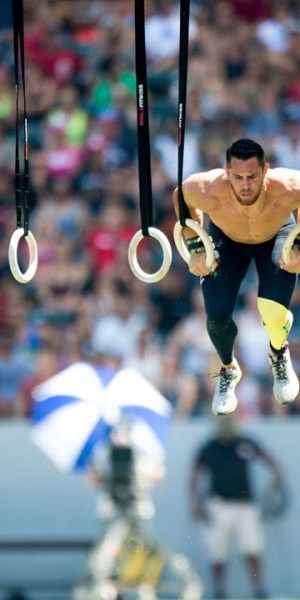It’s been great to see a a bunch of people who are working towards or working to improve their muscle-up in the gym at the moment. Here are some tips to fast-forward that process (be sure to check out the video tutorial at the end):
Disclaimer: If you’re reading this and don’t train at Coastal, you should know that we teach our athletes to do their first muscle-ups with minimal kip and a false grip before we progress to other forms of the movement – this information will be assumed for the rest of the article.
Strength: As a minimum, I would like to see my athletes have 5 really good strict pull-ups and dips as prerequisite strength for the muscle-up. These are not hard and fast numbers, I’ll take more if you’ve got them and I have seen plenty of people get a muscle-up with less than this but the point is, the stronger you are the more repeatable those reps will be regardless of what level of cardiovascular fatigue you’re carrying.
All too often we see athletes who muscle-ups only exist because of huge amounts of momentum who are suddenly stopped in their tracks when their in the middle of a gasser of a workout.
There are plenty of ways of gaining the strength for more/better pull-ups and dips that include but are not limited to – pull-ups and dips (of course), weighted pull-ups, weighted dips, push-ups, ring rows, close grip bench, bent over rows, pendlay rows etc.
If you’ve already got a muscle-up and don’t have 5/5 pull-up/dips then you’ll always benefit from going back to the drawing board and building those numbers up (even if you only ever plan to kip).
Skill: It’s important to realise that you can be practicing the skill component of the muscle-up concurrent to gaining the prerequisite strength. The beauty of this approach is that rather than getting strong and then having to work the skill separately, you’ll find that you’re pretty much ready to go as soon as the strength is there.
Start by learning to hang in false grip. If you’ve never tried this before it’s normal to find it uncomfortable and over time you’ll find little tweaks that make it less painful. It’s a good idea to tape up (kinesio tape works well) so that you’re practice is not limited to what the soft skin on your wrists can handle.
One of the first goals is to be able to hang (a slight bend at the elbow is OK) for 3 x 10 sec. Once you’ve achieved this, start working towards pull-ups in false grip where you achieve a full turn out (full extension of the elbows and shoulders) at the bottom. You’ll probably find it difficult to stay in false grip as you turn out but stick with it – everybody that ever tried this has had the same problem.
A good way to get your head around the transition is to work them in reverse. Set up your rings at a height were you can jump through the transition and press out to support (top of dip), from there lower very slowly into the bottom of the dip and let your elbows come around while you regain false grip. The goal is to be able to move through the movement with total control with no interference by gravity (this will take some practice).
You can also work transitions in the normal direction by setting up the rings low enough to gain some assistance by the legs. Start below the rings in false grip and then practice shooting your shoulders through the window created by the straps of the rings. Only use as much legs as necessary to get through the transition (don’t jump through it) and then sit in the bottom of the dip for a second or two.
Putting it together: How much of each thing should I practice and in what order? Pretty much the simplest way of defining some sort of order or priority is to work the things you find the hardest most often. It’s likely that these things will be the biggest hindrance to your muscle-up.
Keep mixing things up and be patient, as the longer you spend getting the muscle-up the more repeatable that rep will be when you finally nail it.
Why no kipping at the start? There’s always lots of debate on these types of topics but my personal opinion is that I’m more interested in an athlete having the ability to do a SAFE muscle-up even when highly fatigued than boosting their ego with one really ugly, unsafe and unrepeatable rep (if you’ve ever seen someone fall through the rings and nearly separate a shoulder you’ll know what I mean).
Don’t get me wrong, our athletes are not gymnasts and there is certainly some hip involved in these reps but it’s a long way short of simply building up a huge amount of momentum and letting luck be in charge of the rest.
The key is to enjoy the journey and do it right because guess what? As soon as you get your first muscle-up you’re going to want 2, then 3 and the person who ticked all the right boxes on the way to their first rep is way more likely to get those multiple reps sooner than the athlete who wanted a short cut.
If you would like any more information on how to get/improve your muscle-up or anything on CrossFit for that matter – don’t hesitate to contact us at info@coastalcrossfit.com.au.


